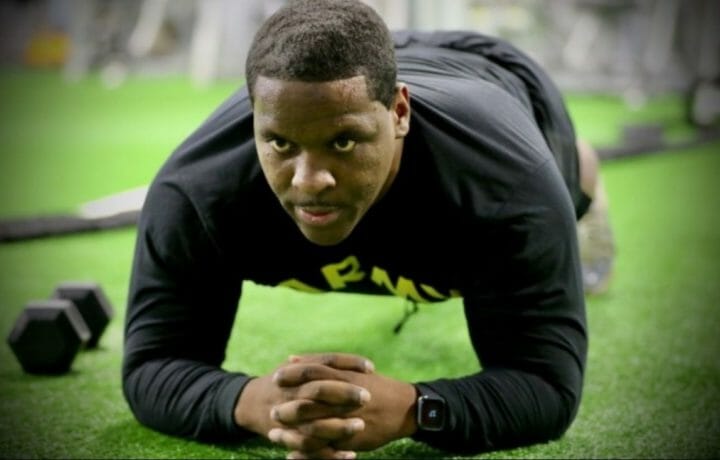Criticism of the ACFT is nothing new. It’s been happening since the test rolled out in 2019 after five years of development. The test was supposed to go into full effect in October of 2020, but implementation and scoring was extended in March of 2020 amid criticism and a number of gym closures prompted by COVID-19. Legislators then jumped into the fray, requiring a pause of the test until a study could be conducted on whether it would affect recruitment and retention, and if it could be reasonably accomplished on a sustained basis.
ClearanceJobs has frequently covered the controversy around the ACFT, including concerns about the cost, National Guard and Reserve capacity, and gender disparity in test results. In a recent interview with author and veteran David Brown, ClearanceJobs unpacked some of the top criticisms behind the test.
1. It Adds Unnecessary Cost
The beauty of the previous Army Physical Fitness Test was the simplicity. Whether it’s training or scoring, all you need is a stopwatch and a track, and you can complete the run, push-ups and sit-ups required. In contrast, the ACFT requires a host of equipment for scoring, from a sled to a weighted ball and kettle bells. You can purchase an ACFT testing kit for a whopping $2,350. Proponents of the test note that this equipment isn’t required to train – grab a bag of sand or a couple of buckets and procure a pull-up ball and you can likely find a way to meet the standard. But that still means the Army has to procure the equipment for scoring – to the tune of $68 million.
2. It will negatively impact retention.
One major issue congress is considering is how the U.S. Army will be able to retain individuals into military occupations like dentistry and IT – where there is a need to be combat ready, but not necessarily Ranger school ready. With a higher training burden, the concern is certain professionals – particularly in those fields with high demand in the private sector – will simply jump ship and pursue other opportunities.
3. women are failing.
Another primary criticism is the high failure rate for women. Initial results found 84% of women failed the test, with the leg tuck being a major hurdle (which led to the latest iteration of the test allowing a 2-minute plank in favor of the leg tuck). In contrast to the APFT, which had different standards for men and women, and based on military occupation, the ACFT was designed as a gender and MOS neutral test of combat-readiness. Over the past few months it has added certain tiers back in, and created new substitutions. This has opened the door for critics, who have argued if the test is designed as a universal assessment, why the new tiers, and if the exercises women are failing are necessary, why is the U.S. Army already lowering the bar/
4. It negatively affects readiness.
The readiness issue often boils down to all of the issues with the roll-out. Some units have been failing to test as they await for the final word on what the test will look like. The U.S. Army has struggled to get scoring data from units, which leads to the belief that some are struggling to complete the test, whether it’s an equipment or a knowledge issue. At present, smart soldiers should be training to pass the test rather than waiting for a change in criteria – but it’s unclear if they’re doing that.
Check out the comments on our articles and you’ll see hundreds of additional criticisms and supporting statements. The ambiguity – created by both the U.S. Army, and now congress, isn’t helping. Soon, however, a decision will have to be made for a common test and a common standard. Then, there will still be critics – but there will also be requirements.




